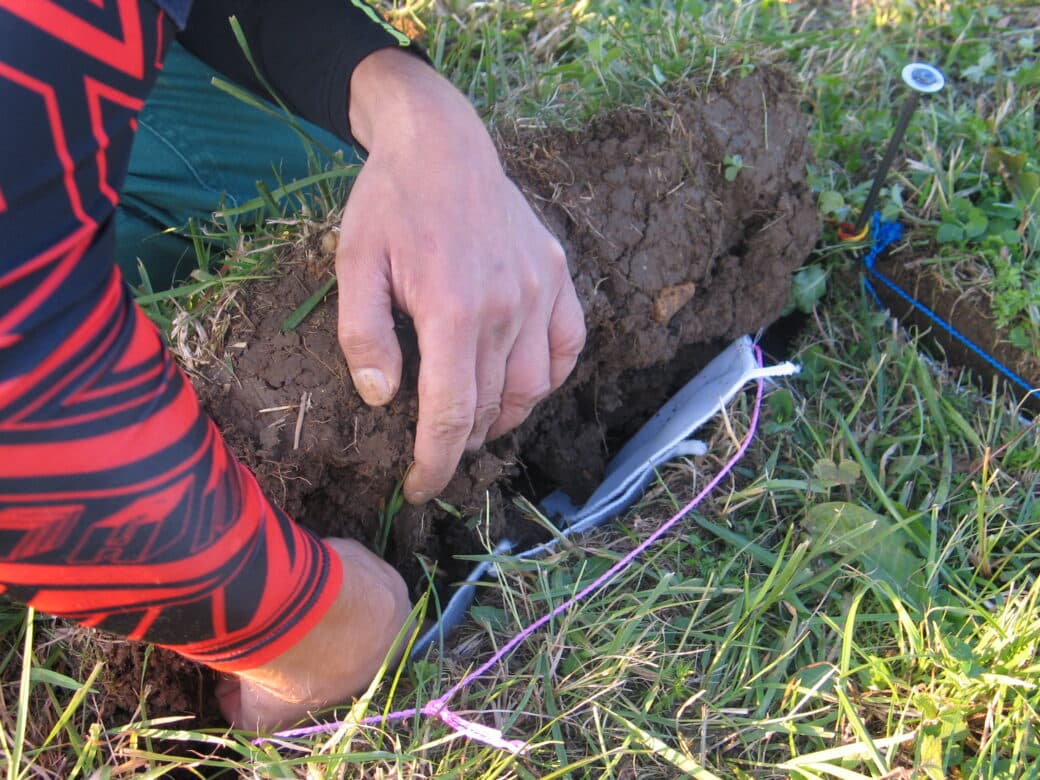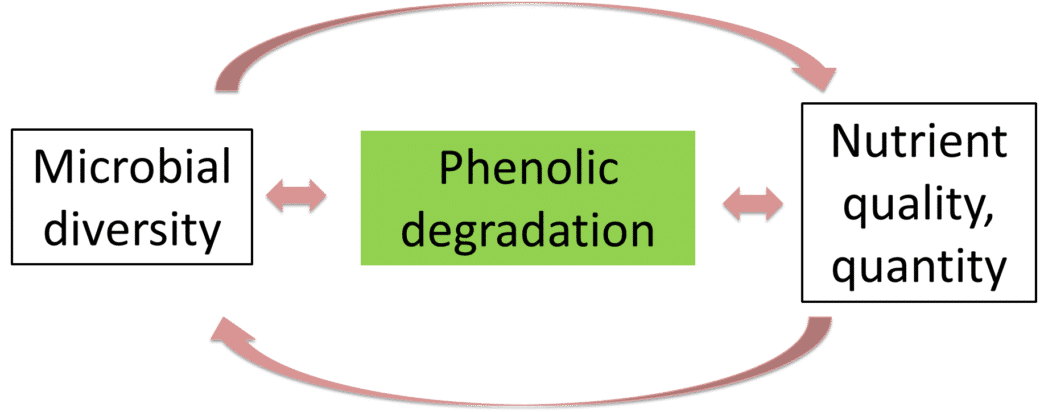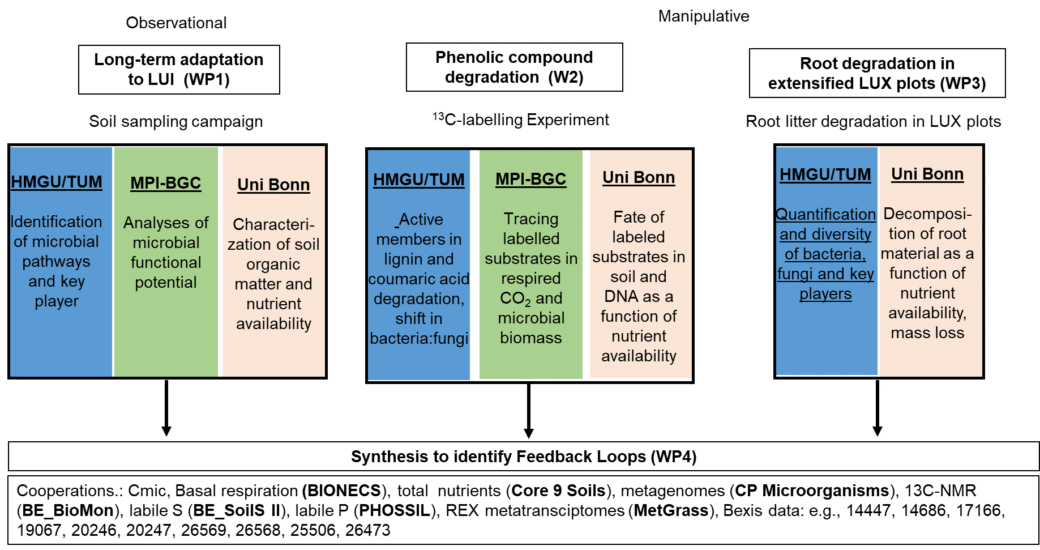Feedback loops between land use intensity, microbial diversity and easily available nutrients on the amount and degradation of phenolic C sources

Phenolic-rich compounds play a major role in organic matter inputs and organic matter turnover in grassland soils. In contrast to other plant-derived substances in soil they are hard to degrade or even toxic for selected microbial taxa. The degradation of these compounds is therefore dependent on highly specialized microbial degraders. Further the activity of degraders of phenolic compounds in soil is strongly influenced by the availability of other nutrients to ensure stable nutrient stoichiometry in microbial cells. However, nutrient availability and the composition of organic matter inputs from roots vary along the to vary along the land use intensity (LUI) gradient of the Biodiversity Exploratories. We therefore assume that the decomposition of phenolic compounds is controlled by trade-offs and feedback loops between microbial diversity and nutrient availability.
In the FeeLoo project we will evaluate,
- if the microbial community composition is altered along the LUI gradients in a way that reduces its functional potential to degrade phenolic compounds,
- if this causes a feedback loop of reduced activity of oxidative, lignin-degrading enzymes, which leads to a reduced degradation of phenolic compounds derived from plant-litter or root-exudates and
- if this process is reversible after grassland extensification.
We will combine microbiome analysis, soil organic matter (SOM) characterization and turnover process analysis, which we will apply in a series of experiments. First, we will characterize SOM quality and nutrient availability as well as the microbial community involved in the degradation of phenolic compounds on all 150 grassland plots of the Biodiversity Exploratories, to evaluate which consequences a shift in nutrient and microbial composition has on the degradation potential. Second, we will test in a 13C-labelling experiment the effect of LUI on the fate of lignin (as model substance for root debris) and coumaric acid (model root exudate and metabolite of lignin degradation) derived C and identify the actively involved microbes. Thirdly, we will perform a root-litter degradation experiment in extensified grassland plots, to evaluate how efficient lignin from root litter is degraded at lower LUI and to what extent lignin degradation decreases when fertilization of easily available nutrients is omitted. Based on this comprehensive data set we will be able to perform a data synthesis to identify the limiting factors for the efficient degradation of phenolic compounds and significantly improve our mechanistic understanding of the degradation of root litter versus root exudate derived phenolic compounds.











